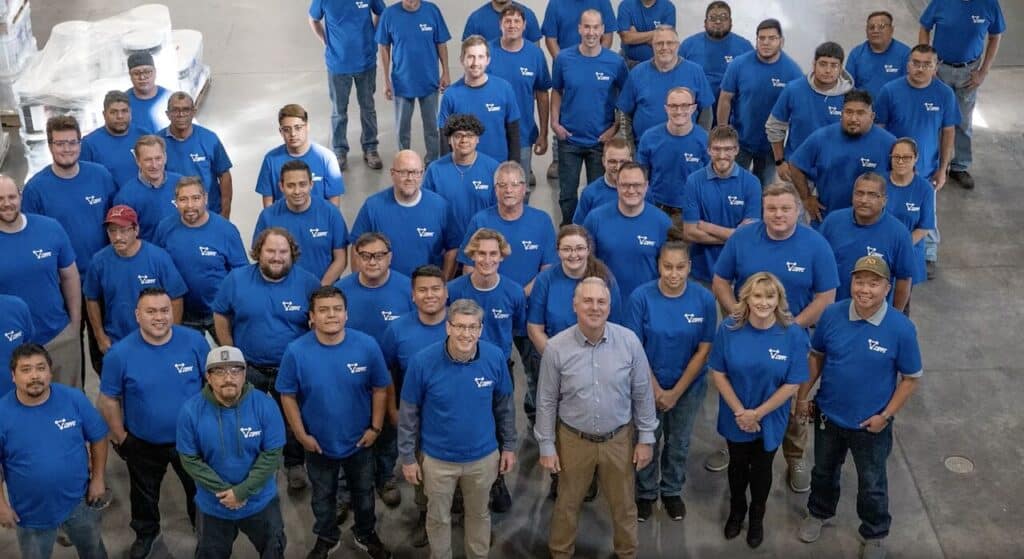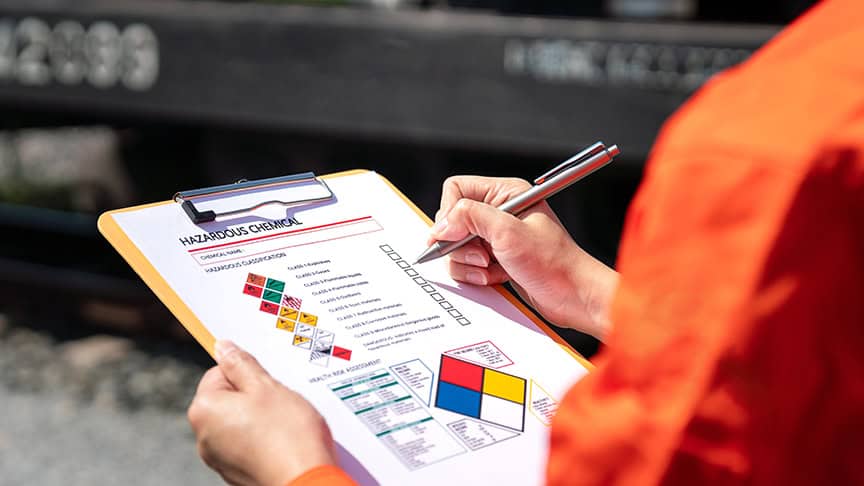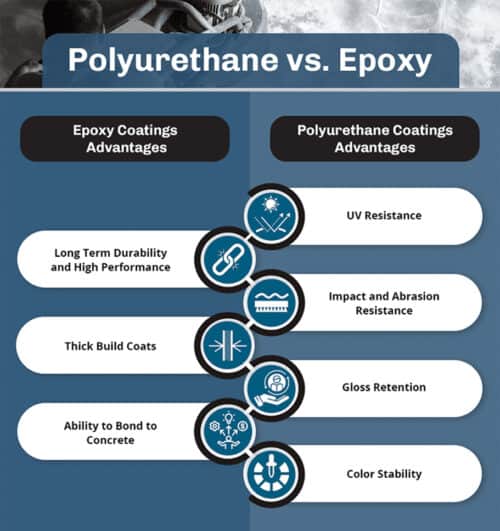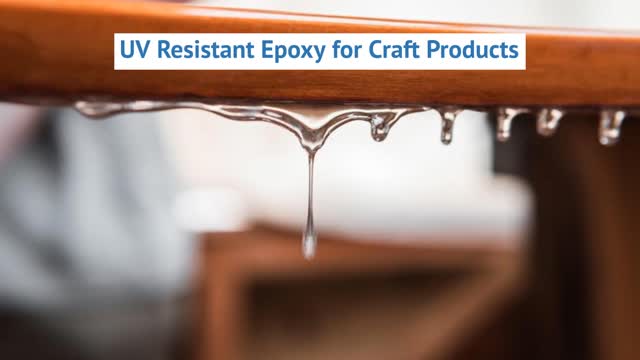Category Archive: Products
At Copps Industries, we’re about more than simply creating epoxy solutions; we’re committed to safeguarding people and the planet. Our dedication to environmental stewardship, safety, and sustainability drives everything we do, from implementing eco-conscious practices to formulating top-tier products.

A Pioneering Approach to Product Development
From the start, our team of chemists and engineering experts have worked to push the boundaries of what’s possible. We didn’t become green; we started green, and we continually refine our products and systems to better align with the evolving needs of our customers and our planet.
We’re driven to enhance our products for greater workplace health, safety, and long-term sustainability. Our design and development approach and our team’s depth of knowledge are backed by a commitment to provide the best solutions possible.
Our commitment to sustainability starts with our core values and extends to the performance of our product line. We combine environmental consciousness with quality and reliability by offering solutions that meet high standards. Here’s how:
- Environmental Stewardship
We’ve taken concrete steps to reduce our environmental footprint by committing to eco-friendly practices and minimizing waste.
- DOT Non-Corrosive Products: We offer a range of non-corrosive products that have earned esteemed ratings from the Department of Transportation. These products streamline shipping processes, eliminate hazardous material fees, and offer ease and affordability without sacrificing safety.
- Minimal Waste: We continually optimize our packaging to minimize waste and enhance shipping and storage safety. For example, our general-purpose, 1-1 epoxy adhesives are non-corrosive, making them safer to package, transport, and store.
- Health and Safety
From day one, we’ve operated with a different mindset. While other suppliers were making the easiest and cheapest product, we committed to the absolute safest formulations.
- Reformulated Epoxies: We’re among a small group of innovators offering a wide range of proven, uniquely formulated solutions. We’ve reformulated our epoxies with alternatives that ensure every solution prioritizes performance and the planet.
- Elimination of Harmful Substances: Properly formulated epoxies do not contain carcinogenic components, are non-flammable, and, most importantly, are safer in the workplace. Our non-corrosive crusher backing products are free of volatile organic compounds (VOCs), butyl glycidyl ether (BGE), and nonyl phenol.
- Long-Term Sustainability
We believe sustainability goes beyond environmental impact. It also encompasses long-term viability and takes into consideration our customers’ total cost of ownership.
- ISO Certification and Custom Formulations: As an ISO-certified custom epoxy resin formulator, we deliver tailored solutions to meet customers’ unique needs. With over 400 clients and 2,500 epoxy products, we offer specialized formulations prioritizing performance and sustainability.
- Environmental and Safety Regulations: We take pride in adhering to stringent environmental and safety regulations, both in the U.S. and abroad. We continually watch regulations to keep pace with changes and stay ahead of customers’ needs by proactively formulating on their behalf.

Sustainable Future Starts with Copps Industries
When you choose Copps Industries, you’re not just choosing a supplier; you’re choosing a partner in progress. We work alongside our customers to pave the way for near-term performance and long-term sustainability through innovative product development and collaboration to make a positive impact on both operations and the planet.
Copps Industries has always sought to do the right thing for our customers, our employees, our community, and the environment. Our comprehensive line of products prioritizes environmental stewardship, health and safety, and long-term sustainability without compromising quality or performance. Contact us to learn more or request a quote to get started on your order.
In an environment marked by constant change, many businesses grapple with ever-shifting market dynamics, technology, and rules and regulations. Keeping pace demands expertise beyond the reach of most—no one organization has all the knowledge and resources to navigate this terrain alone. That’s why it’s so important to seek out partners who complement your capabilities and are deeply invested in your success.
Enter Copps Industries’ Virtual Chemist, a concept that redefines manufacturer-supplier collaboration. Here, we’re exploring what the Virtual Chemist is and how this innovative resource can benefit you.

The Virtual Chemist Concept
The origin of the Virtual Copps’ Chemist lies in our commitment to customer success. From the start, we recognized that most manufacturers don’t have the technical expertise to specify their formulations. You might know what you want but not necessarily how to get there. That’s where our knowledgeable team steps in to lend their insights. Since 1979, we’ve been developing custom formulations that fit a wide range of customer needs.
To picture the Virtual Chemist in practice, imagine this scenario: a customer might approach us with an inquiry about how a specific formulation would endure the extreme conditions of the African desert. While we may not have experienced this particular climate, we are confident in the product’s resilience in scorching Arizona temperatures. So, we work from there and collaborate to arrive at a solution.
This is the essence of the Virtual Chemist. Rather than succumbing to uncertainty, we leverage the collective expertise between our team and our customers. Together, we explore and innovate, pooling our resources and knowledge to address the challenge at hand.
There are countless other scenarios where the Virtual Chemist demonstrates its value. From keeping up with the latest chemical regulations to analyzing shipping requirements, we advise on every aspect of product development, use, and delivery. We also believe that access to these insights shouldn’t require exorbitant fees; it should come bundled with your custom solutions. This approach underscores our attention to your needs and our pursuit to exceed your expectations.

Commitment to Customer Success
Why does the Virtual Chemist concept matter to your success? Because the role of a supplier should transcend simply providing goods. The right partner serves as an ally who offers insights, fills knowledge gaps, and provides proactive support.
Through the Virtual Chemist, Copps Industries:
- Acts as an extension of your team. Our mindset of mutual success means that we work side-by-side with your team. With easy access to our staff and resources, you gain a partner equipped to navigate chemical and technical challenges, shipping intricacies, and evolving rules and regulations.
- Bridges knowledge gaps. We bridge the knowledge gaps our customers and other partners may have by freely sharing our expertise. Through educational initiatives for your sales or tech team, like the Rock Crusher College available to our Aggregate & Mining customers and other knowledge-sharing, market-specific events, we ensure you’re empowered with information and insights.
- Provides proactive support. We offer proactive support by staying ahead of market trends and regulation changes. This approach can transform your supplier relationship into a collaborative partnership that ensures you remain competitive and compliant.
Partnering with Copps Industries allows you to unlock the power of the Virtual Chemist at no additional cost. It’s all about recognizing that your supplier relationship is more than just transactional; it’s a strategic aspect of your success.
Partnership is Paramount at Copps Industries
The Virtual Copps’ Chemist is more than just a service—it’s a testament to our commitment to customer success. As a catalyst for collaboration, the Virtual Chemist allows you to harness our expertise, secure top-quality products, and gain a partner dedicated to moving your business forward.
As you assess your supplier relationships, look beyond the surface and evaluate the full spectrum of support they provide. The right partner makes all the difference as you navigate an increasingly challenging landscape. To learn more about Copps Industries and get started collaborating on a custom solution contact us today.
In the ever-evolving landscape of industrial solutions, Copps Industries stands out for our dedication to innovation and customer-centricity. With a commitment to meeting unique customer needs, our team continually pushes the boundaries in product development.

Copps Industries’ portfolio of products includes a range of solutions tailored to diverse industrial needs. From grouts to wearing compounds, each product reflects our commitment to quality, safety, and innovation. Many of these products have been developed in direct response to specific customer demands, emphasizing our agility and responsiveness to market needs.
One example is Copps XP-3000, a non-corrosive version of our ultimate crusher backing material, XP-2000. Designed to tackle the most challenging crushing conditions—ranging from gyratories to wet crushing environments—XP-3000 is a testament to our pursuit of excellence. Unlike its predecessors, XP-3000 is free from harmful substances like BGE1, VOCs, or Nonyl Phenol, giving it a DOT non-corrosive classification.
The difference between DOT and non-DOT classification lies in transportation regulations and safety standards. Certain products must meet Department of Transportation regulations for the safe transport of hazardous materials. These regulations mandate specific packaging, labeling, and handling requirements. DOT non-corrosive products, like XP-3000, contain substances that don’t require compliance with DOT corrosive chemical regulations. This classification simplifies logistics, reduces shipping costs, and ensures safer handling throughout the supply chain, providing customers with added peace of mind and cost savings.
The development of XP-3000 emerged from our deep understanding of the broad spectrum of customer requirements. Conceived to address the urgent needs of clients facing unforeseen situations, its ability to be airfreighted provided a solution to pressing delivery demands. Our ability to anticipate and respond to unique customer needs is tied to our ethos of constant innovation and adaptability.
Beyond XP-3000, our family of DOT non-corrosive products include:
- Non-Corrosive QFG epoxy grout (K-020): A DOT non-corrosive version of our REDBAC Quick-Fill Grout specifically formulated to address environmental, workplace safety, and shipping concerns.
- Non-Corrosive Deep Pour 3CE epoxy grout (K-840): A DOT non-corrosive version of our standard Deep Pour 3CE Grout specifically designed for pours up to 8 feet.
- Non-Corrosive Armor Plate-Ceramic wearing compound (K-046): A DOT non-corrosive version of our standard Armor Plate-Ceramic specifically designed to resist abrasive wear and corrosion in high wear areas.

These products have been formulated and reformulated to ensure top performance and top quality. Their DOT non-corrosive classification simplifies logistics, reduces costs, and serves as an example of our proactive approach to problem-solving.
At Copps Industries, it’s not just about the product; it’s about the philosophy driving its creation. We continually explore avenues for improvement, whether it’s through refining existing formulations or venturing into uncharted territories.
Copps Industries is more than just a supplier of products; we stand at the forefront of innovation and product development. As industries evolve and needs emerge, we pledge to continue pushing boundaries and advancing industry standards. Get in touch today to learn more, or request a quote to get started on your order.
Whether you’re undertaking a DIY craft or home improvement project or overseeing a large commercial project, it’s important to understand the nuances between polyurethane and epoxy coatings. These two coatings may seem similar, but each has distinct properties and advantages tailored to specific needs.
There are many uses for epoxy and polyurethane coatings, and selecting the right coating is important for long-lasting protection and performance.
For example, consider a homeowner who is renovating their garage floor. They require a coating that can withstand frequent traffic, spills, and potential oil leaks. On the other hand, an industrial facility manager may be tasked with safeguarding concrete surfaces against corrosion, impact, and harsh chemicals.
In each scenario, the choice between polyurethane and epoxy coatings hinges on factors such as substrate type, project requirements, and environmental conditions. Learning the unique properties and advantages of each coating will help you choose the right solution for your project.
Let’s take a look at these popular coatings, starting with a clear definition of epoxy and polyurethane.
What is Epoxy?
Epoxy is a hard-wearing resin system known for its surface tolerance and adhesion to various substrates. It offers versatility with properties like chemical resistance or fast-setting. Depending on the intended application, you may choose any one of several epoxy options.
Here are some key advantages of epoxy coatings:
- Surface Tolerance: Epoxy coatings excel in adhering to different surfaces, making them ideal for a wide range of applications.
- Ability to Bond to Concrete: Epoxies can chemically and mechanically bond with concrete, making them a preferred choice for coating concrete substrates.
- Durability and Impact Resistance: Once treated with an epoxy resin, surfaces have a harder, more durable surface with impressive impact resistance.
- Thick Build Coats: Thanks to their thickness, epoxy coatings are able to self-level and create smooth surfaces by filling cracks and blemishes.
What is Polyurethane?
Polyurethane is a versatile polymer compound that is commonly used in various applications. It offers a softer alternative to epoxy with remarkable scratch resistance and flexibility, making it ideal for flexible substrates.
Here are some key advantages of polyurethane coatings:
- UV Resistance: Polyurethane coatings are highly resistant to UV radiation, making them suitable for outdoor applications.
- Impact and Abrasion Resistance: They offer excellent protection against impacts and abrasions, maintaining the integrity of the coated surface.
- Gloss Retention: Polyurethane coatings retain their glossy finish over time, enhancing the aesthetic of the coated surface.
- Color Stability: They also provide long-term color stability, ensuring the coated surface maintains its appearance.
Applications and Uses
Both epoxy and polyurethane coatings find applications in various industries and projects. Epoxy offers higher levels of rigidity and adhesion, making it suitable for harder surfaces, like concrete and areas with high physical impacts. Polyurethane, on the other hand, is often chosen for its cosmetic performance characteristics that offer holistic protection for the entire system.

Choosing the Right Coating
When selecting between epoxy and polyurethane for your project, consider the following factors:
- Surface Type: Determine the type of surface you’re coating. Epoxy is ideal for harder surfaces, while polyurethane is better suited for flexible surfaces.
- Project Requirements: Consider the specific needs of your project, such as durability, UV resistance, or aesthetic appeal.
- Cost Consideration: Polyurethane coatings may cost more upfront, but they can offer long-term savings in certain applications.
- Environmental Conditions: Think about the environmental factors your project will face, such as exposure to high traffic or harsh chemicals.
Understanding the unique properties and advantages of epoxy and polyurethane coatings will help you select the right solution for your next project. Whether you prioritize durability, flexibility, or aesthetic appeal, there’s a coating option that suits your needs.
Industrial Epoxy Solutions from Copps Industries
For applications that require significant durability and high performance, epoxy resins are the ideal choice. Since 1979, Copps Industries has been dedicated to providing the finest industrial epoxies in the field. Over decades of experience, we’ve successfully diversified our lineup to offer more than 500 products in 27 countries. Markets we serve include:
- Electronics
- Civil Engineering
- Structural Adhesives
- Aggregate/Mining
We’re dedicated to manufacturing products of the highest caliber at our ISO 9001:2015-certified facilities. Contact us or request a quote today and learn more about our epoxy resin solutions.
As the lifeblood of progress in any industry, innovation propels business, drives growth and reshapes possibilities.
At Copps Industries, innovation is evident in the epoxy solutions we’ve developed for over 400 customers in 27 countries. But it’s also apparent in how we do business as well.
From everyday interactions to unique, private-label formulations, we invest time, expertise, and people power in the pursuit of better solutions for those we serve. To earn trust. And to always do what’s in the best interest of our customers, employees, and the environment.
3 Reasons “Why” Copps Industries
A reliable name in epoxies since 1979, today we’re among a select group of innovators capable of offering (and supporting) proven, economical, and uniquely formulated systems for markets including:
- Aggregate/Mining
- Civil Engineering
- Structural Adhesives
- Electrical/Electronics
- Composites / Carbon Fiber
1. We Can Be Your Virtual Chemist
When the ideal epoxy solution you need today isn’t already on our shelves – or not within your company’s capabilities to develop right now – count on Copps to be your “virtual chemist.”
It’s how we empower companies to explore the best solution possible – to zero in on what’s necessary and not just available – with zero additional upfront investment. What’s more, with Copps as your virtual chemist you don’t just get the formulation to meet a specific challenge. You get the power and expertise of our entire company, from top to bottom and start to finish, including:
- Product development
- Quality Control/Assurance
- Custom Product Formulation Modules
- Fully Equipped Testing and Analytical Laboratory
- Environmentally Responsible Chemical Management
- Complete Customer and Technical Service Support
- Manufacturing, Packaging, and Labeling
- Direct Shipping
2. The Power Of Private Label
The benefits of private labeling are well documented: key performance standards like customization, brand identity, and quality control to name just a few.
But having evolved over the decades from a single product line manufacturer to one of the premier OEM and private label providers, the benefits of working with Copps go beyond just what gets put in the bottle, including:
- No Research and Development Costs
- No Fixed Costs
- Regulatory and Environmental Compliance
- No Expensive Start-up Costs
- No Manufacturing Costs
- Export Shipping Compliance
Bottom line is, working with the Copps Private Label Program is a powerful tool that can improve your bottom line without risk. Because everything we can do for you is covered in the price of your product.
Why? Because it’s how we do business. And because your success is our success. To get to our promise, our path includes:
INNOVATIVE MARKET-PROVEN PRODUCTS – Over 2,500 formulations immediately available as-is or readily modified to meet your requirements.
CUSTOM PRODUCT FORMULATIONS – Comprehensive in-house research, development, testing, and prototyping capabilities enable us to formulate products to your precise specifications. All with rapid turnaround.
A BETTER WAY TO GET TO MARKET – Whether you select from our large inventory of market-ready products or customize with our chemists, our turnkey program significantly shortens time to market and greatly increase your ROI.
A SOLUTION FOR EVERY SIZE – Whatever size your company is, whatever circumstances you’re operating under (i.e., downsizing, restructuring, or hampered by limited manufacturing or design capability) we’re the solution.
JUST WHAT YOU NEED – Our experts assess all aspects of your product(s) requirement. Product development, production parameters, specifications, packaging, and labeling details are all evaluated to ensure regulatory compliance. And market success.
TOTAL CONFIDENTIALITY – Backed by our proven track record for compliance, maintenance, and performance around the world. All pertinent documentation and product furnished by Copps is controlled by our state-of-the-art ERP computer software system.
The only question left to ask is simple: What is it costing your company to not private label with Copps?
3. A True Commitment To The Environment
The epoxy solutions we formulate for our customers don’t just have to perform on the job to our exacting standards. They must meet our sustainability standards for the health and well-being of our customers, our people, and the planet we share.
- NO Corrosives
- DOT Non-Corrosive
- Non-corrosive = Improved User Safety
- Easy Shipping Paperwork
- Readily UPS shippable
- Air Shipments
- Reduced Shipping Costs
- Warehouse Storage with No Corrosive Fees
- Eliminates hazardous materials storage / warehouse regulations / improves worker safety
From the removal of all flammables and chlorinated solvents in our plant, to re-formulating core products replacing known or suspected toxic ingredients, to the continual upgrading of our packaging – we stand on the promise to always evaluate new information and seek better solutions. We never had to “become” environmentally conscious. We started out that way.
Your Success Is Our Success
As a company, we’re guided by the commitments we keep – to those we work with as well as where we live. Our goal at the beginning of every relationship is to provide the type of experience other companies can’t (or aren’t willing) to deliver.
Innovation. It’s well-documented in the better epoxy solutions we create to meet the highest performance standards in the evolving industries we serve. It’s also in how we create those solutions, and how we operate day in and day out with the people we serve.
Are you ready to put the power of innovation and private labeling with Copps to work for you? Connect with us today.
The arrival of epoxy resin in the craft and DIY world presents new opportunities for creative projects. From jewelry, paperweights, and other small pieces to tabletops, bowls, artwork, and more, the range of ways casting, and tabletop epoxy resin can be incorporated into art and decor is nearly endless. In this blog, we will discuss the different types of resin molding products and the most effective molding techniques.
Molding Epoxy Resins: Types of Molds
Using molds is one of the most popular ways to work with epoxy resin as they can create shapes ranging from very simple to highly intricate. Molds vary in material, flexibility, ease of use, and level of detail, all of which can also affect their cost. Three of the most common types are silicone, casting, and homemade molds.
Silicone Molds
Widely available and highly sought after, silicone molds are flexible, easy to use, and available in virtually any shape and size in local stores and online. Intricate molds designed for epoxy resin and other craft purposes provide excellent results with smooth surfaces and don’t require release agents.
Homemade Molds
Silicone putty, clay, and other materials are ideal for making your own reusable molds. Typically, these molds are made by shaping the putty around an object. Once the silicone sets, the finished mold of the object can be used for epoxy resin projects.
Resin Casting Molds
Some of the most durable, resilient molds used in epoxy resin casting are made from rigid plastic or metal. Plastic versions are typically made from HDPE plastic, which is naturally non-stick, so release agents aren’t necessary. These molds maintain quality for long-term use, making them great for repeated jewelry and decor projects.
Preparing Your Workspace for Molding Epoxy Resins
Because epoxy resin must be poured within its pot life, preparation is essential for achieving your desired results. At a minimum, we suggest you have the following ready:
- Room-temperature epoxy and hardener
- Clean, dry mixing container, stir stick.
- Disposable gloves
- Workspace protection such as a drop cloth or newspaper.
- The mold(s) you plan to use, with mold release applied as needed.
Our tips for success are to:
- Have plenty of room to work safely.
- Plan your pour – Gather and organize your supplies and tools.
Molding Epoxy Resin Crafts Using Molds
Once you have molds, supplies, and a prepared workspace, you’re ready to combine them and start crafting. Be sure you have casting resin, which works better for molding projects than tabletop resin formulations. While specific details may vary, the basic steps will be much the same:
- Prepare your epoxy resin and hardener: Follow the manufacturer’s directions to mix the amount of resin and hardener you will need and any other preparation instructions, being careful to measure exactly and stirring well to mix it.
- Make it colorful: Clear resin is beautiful, but resin-safe pigments such as mica powders and dyes can also be added for a different effect. Be careful to not add water-based colors that may ruin the resin.
- Pour the prepared resin into the mold: Slow, careful pouring helps prevent spills and air bubbles.
- Add special embellishments: Glitter, dried flowers, sequins, beads, or other small objects can help you create visually interesting effects. A toothpick may help place things more precisely.
- Take care of air bubbles: No matter how careful you are, air bubbles happen. A few passes with a heat gun can help them rise to pop at the surface but be careful not to overheat your mold.
- Curing and releasing: Follow the resin manufacturer’s instructions for curing times. When ready, gently flex or tap on molds to release your creation.
Molding Epoxy Resin Finishing and Post-Processing
Molded epoxy resin items may look perfect just as they are, but you may also want or need to do a little finishing work, including:
- Adding a protective, glossy clear coat
- Sanding, buffing, and polishing for extra shine
- Adding magnets, jewelry mountings, or other details
Don’t forget to clean your mold and workspace. Dry epoxy resin will not peel off hard surfaces after it sets, and rubbing alcohol is generally effective at removing resin before it sets. Molds can be washed with warm, soapy water—just be careful to not use anything abrasive or the scratches and marks you leave behind may show up in future projects.
Learn More About Molding Epoxy Resin
Molding projects with epoxy resin can be a fun, rewarding way to create an endless variety of beautiful and practical items. Knowing how to work with resin properly makes it a breeze. At Copps Industries, we have decades of experience with epoxy products. Contact us today to learn more or to request a quote for your epoxy resin needs.
Epoxy-based coatings have been an economical choice for facility owners and designers. As a versatile coating solution, epoxies provide an aesthetic appeal, durability, chemical resistance, and surface protection from corrosion for many applications. While epoxies can be an ideal solution for surface coating, they are prone to breaking down due to exposure to light, especially ultraviolet (UV) light.
Copps Industries has been delivering epoxy resin solutions since 1979. We serve a variety of industries and applications with solutions for complex and demanding applications and harsh environments. Our custom formulations, depth of experience, and extensive portfolio allow us to deliver solutions that meet your expectations. This blog will answer the question, “Is epoxy UV resistant?” We will explore methods to protect epoxies from UV light and the benefits of using epoxies to help you determine if UV-resistant epoxy is ideal for your application.
How Does UV Light Affect Cured Epoxy?
When epoxy resin is exposed to UV light, it undergoes a process called photodegradation. The energy from the UV radiation breaks down the cured epoxy, which causes it to become weaker, discolored, and brittle.
One of the primary effects of UV exposure on cured epoxy is a reduction in its clarity and glossiness. Over time, the epoxy may start to appear cloudy, hazy, or yellowed. This is often called “ambering,” and it can be particularly noticeable on light-colored or transparent surfaces.
In addition to reducing the visual appeal of epoxy, UV exposure can also weaken its physical properties. The cured epoxy may become chalky or powdery, indicating that it has lost some of its strength. This can make it more prone to cracking, peeling, or flaking, especially if it is subjected to mechanical stress or environmental factors like moisture and temperature changes.
Prolonged exposure to UV radiation can cause irreversible damage to cured epoxy, leading to structural failure and other issues. To prevent this, it’s important to take steps to protect epoxy surfaces from UV light, such as using a UV-resistant topcoat or keeping the epoxy out of direct sunlight whenever possible.
How Can Epoxy Be Made UV Resistant?
As epoxies are not naturally UV resistant, manufacturers commonly add UV-absorbing additives to the epoxy formulation. These additives work by absorbing the UV radiation before it can penetrate and degrade the epoxy resin and hardener. By incorporating these additives, epoxy can withstand exposure to UV light for longer periods without showing significant degradation.
Another way to protect epoxy surfaces from UV damage is to use a UV-stable topcoat. This coating can be applied over the cured epoxy to act as a barrier between the epoxy and the UV radiation. The topcoat should be designed specifically for use with epoxy and should be rated for outdoor use if the surface will be exposed to direct sunlight.
The duration of UV protection for epoxy depends on the type and quality of the UV-resistant coating used, and factors such as UV exposure, climate, and coating quality can further affect the duration of protection. Regularly applying maintenance coats of UV-resistant varnish is important, with the frequency depending on the level of UV exposure and coating quality. Reapplication every one to three years, or as needed, is recommended for optimal protection.
In addition to using a UV-resistant coating or adding UV-absorbing additives to the epoxy formulation, there are other ways to protect epoxy surfaces from UV damage. For example, keeping the epoxy out of direct sunlight and using shading devices, such as awnings or umbrellas, can significantly reduce UV exposure. Regular cleaning and maintenance of the surface can also help to prolong its lifespan and protect it from UV damage.
Protecting epoxy from UV damage is essential to ensure its longevity and maintain its appearance. By choosing a UV-resistant coating or adding UV-absorbing additives to the epoxy formulation, and taking appropriate measures to minimize UV exposure, it is possible to protect epoxy surfaces from UV damage and extend their lifespan.
Advantages of Using Epoxy
While traditional epoxy is not UV resistant on its own, epoxy resins provide the following advantages:
- Durable: Epoxy resins offer good stability and durability, offering weather and chemical resistance.
- Easy to Apply: Epoxy resins can be applied quickly using a relatively simple process.
- Gap Filling: Epoxies can fill surface gaps to provide a smooth finish.
- High Strength: Epoxy resins provide a fast and strong adhesive bond to various surfaces and deliver long-term resilience and hardness.
- Versatile: Epoxy resins can be used in almost any surface coating application and can be a substitute for various other materials.
- Shrink Resistant: Epoxies are not prone to shrinkage and will not become loose once they settle properly with less than a 1% probability of shrinkage.
- Thermosetting: Once fully cured, epoxy resins will maintain their solid state and remain unaffected by high temperatures, without any melting or softening.
- Underwater: Epoxy resins are waterproof and can be used for underwater construction.
Countertop & Crafting Epoxy Resin From Copps
Epoxy resins are a preferred surface coating material for residential and commercial applications. They offer a variety of benefits, including strength, resistance to water and high temperatures, and extreme versatility. Traditional epoxies can degrade under prolonged UV light exposure and require additives or coatings to inhibit permanent photodegradation from UV light.
Copps UV-resistant countertop and crafting epoxy is easy to use and ideal for every user, from beginners to advanced artisans. Our UV-resistant craft epoxy comes in a simple, two-part system. Its self-leveling properties make it easy for users to get a perfect finish the first time. It hardens to a glass-like, crystal-clear finish to deliver lasting beauty to any countertop or crafting project. Copps has a variety of new epoxy systems with UV protection for every application. Contact us or request a quote for your UV-resistant epoxy solution.
At Copps Industries, we take our commitment to the environment, our community, and our customers seriously. The Science Based Targets initiative (SBTi) offers companies a clear roadmap for sustainable growth by determining the amount and speed of reducing greenhouse gas emissions. Learn more about how we’re committing to reducing climate change through the Science-Based Targets initiative.
What Are ‘Science-Based Targets’?
Proper organization and project management initiatives can help organizations zero in on social and environmental goals as part of their ESG efforts. ‘Science-based targets,’ in particular, are used to denote the specific goals — and pathways to achieving those goals — that companies will use to curb greenhouse gas (GHG) emissions. The Science-Based Targets initiative (SBTi) is the framework that gives organizations a clear series of steps to future-proof their company’s growth and ensure sufficient reduction in greenhouse gas emissions. Many organizations are starting to focus on these initiatives in order to future-proof their business and develop a pathway to minimizing their organizations’ impact on climate change.
The framework for developing science-based goals is especially helpful in this context. The goals take into account developing scientific knowledge and understanding of greenhouse gases and become very specific, actionable goals. The criteria for determining if a goal is science-based is if it aligns with the scientific evidence of how to achieve the goals in the Paris Agreement, an international treaty focusing on climate change and efforts to curtail or reverse negative environmental changes. The main focus of the Paris Agreement is a hard ceiling on temperature increases — taking measures to ensure the temperature doesn’t increase by 2° C above the known pre-industrial levels — and a softer goal — taking measures to curtail warming so it doesn’t rise by more than 1.5° C.
While many organizations are already motivated to reduce their climate impacts and have made strides in this direction through innovative practices, a clear framework can make those efforts more efficient and effective. Ambitious, scientifically-back goals can also set the groundwork for even more transformation.
Science-Based Targets Initiative Commitment Compliance Policy
The first step in joining the Science-Based Targets initiative is to sign the SBTi Commitment Letter, which allows participants to publicly mark their company as committed to SBTi. If your organization opts to commit to net-zero GHG emission goals or near-term GHG reduction goals, you will have a 24-month timeline to complete these two steps:
- Create a science-based target that fulfills SBTi criteria.
- Submit that goal for SBTi validation. To complete this step, your organization will need to book a target validation slot online and submit the required form.
These two steps are essential for creating science-based targets that align with the core mission of the Paris Agreement and ensuring that your organization is on track to realize your goals.
Copps Industries Science-Base Targets Initiative: Greenhouse Gases and Environmental Commitment
At Copps Industries, we support SBTi and the continued efforts toward a future with reduced or net-zero GHG emissions to slow climate change. Our organization is committed to doing the right thing for all of our stakeholders, including our employees, customers, community, and environment. We continually work toward future-proofing our organization and reducing our environmental impact with initiatives like:
- Removing flammables from our plant
- Replacing chlorinated solvents in favor of more environmentally-friendly compounds
- Removing known and suspected toxic ingredients from our chemical formulations
- Upgrading our packaging to reduce waste
Copps is a leading innovator in the epoxy product space, and our mission is to continually innovate our products and services to meet the needs of our customers and environment. We also prioritize the continued safety of our employees in the workplace through products and processes that have fewer toxins and preserve air quality. We aim to continue focusing on environmental commitment to a cleaner future and providing our clients with consistently high-quality epoxy products.
Learn More About Our Mission
Copps Industries is your go-to partner for high-quality epoxies, but we’re also your partner for environmental action and a more sustainable supply chain. Contact us today to learn more about our initiatives, or request a quote for pricing details on our products.
Acrylic resin is a group of thermoplastic materials derived from acrylic acid — a monomer that is reactive with other chemicals to harden. Epoxy resin is a type of thermosetting material that can be a two-part clear liquid. Both types of resins have unique properties and applications. Copps Industries is a leading provider of epoxy resins and composite materials, offering over 500 epoxy products to customers across 27 countries.
Acrylic Resin vs. Epoxy Resin
Acrylic resin is a type of thermoplastic that can be repeatedly heated and shaped. It combines acrylic polymers with dry powders, a thin liquid, methyl methacrylate monomers, and a hardener. It’s different from epoxy resin because it can be reshaped with heat for further manipulation. Acrylic resin is strong, durable, and resistant to UV damage. This makes it ideal for a variety of applications, including outdoor use.
Epoxy resin is a thermosetting material used to create hard, durable castings, coatings, and adhesive products. It comes in a liquid form that cures quickly and adheres to different substrate materials like glass, wood, stone, concrete, and metal. The liquid epoxy is combined with a chemical hardener which cures it into hardened plastic. Once the mixture is set, it cannot be remolded or reshaped. Epoxy resins are very strong and resistant to chemicals, electrical damage, and heat. This makes them ideal for use in high-stress environments and applications requiring strength and durability.
Selecting the correct resin for your application is essential for the success of your project.
Applications
Acrylic resin is a versatile material that is used in a variety of applications, including:
- Brake lights: Acrylic resin is durable and resistant to fading, making it an ideal material for brake lights.
- Phone screens: The material is also applied to phone screens because it’s lightweight and shatter-resistant.
- Dentures: Acrylic also can mimic the appearance of natural teeth and is often used for dentures.
The strength and durability of epoxy make it ideal for industrial and commercial use, while its aesthetic properties make it popular for arts and crafts projects. Some of the most common uses for epoxy resin include:
- Adhesives: Epoxy is well-suited for adhesives because it forms a strong bond and is resistant to high temperatures and chemicals. It is commonly used to adhere metal, glass, and plastic components together.
- Industrial tools: Tools made with epoxy resin are incredibly durable and can withstand heavy use.
- Electrical components: Epoxy resin is an insulator, making it ideal for electrical applications.
- Repair and maintenance: Frequently used in repair and maintenance applications because it can effectively fill in cracks and gaps.
- Artwork: Epoxy resin can be used to create beautiful artwork. It can be cast into shapes or molded into three-dimensional designs. It can also be used as a protective coating for paintings or photographs.
Resins From Copps
Copps Industries is a leading provider of resins and composite materials. We offer a wide selection of epoxy resins suitable for applications across diverse industries. Our products are of the highest quality, and we offer competitive pricing and lead times. In addition, our team is highly knowledgeable and can assist you in choosing the right resin for your project.
Contact us today to learn more about our products and services or request a quote. You can also call us at 800.672.2622.











